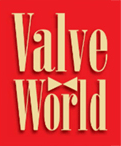Scientists have discovered a potentially greener way to produce a crucial industrial chemical used to make many everyday products from plastics and textiles to antifreeze and disinfectants, according to a new study published in Science and co-authored by Tulane University Chemical Engineer Matthew Montemore.
By Stacey Plaisance, Tulane University
The breakthrough of greener chemical production could significantly reduce greenhouse gas emissions from the manufacture of ethylene oxide, which has an estimated $40 billion global market. The current production process requires chlorine, which is toxic and emits millions of tons of carbon dioxide into the atmosphere annually. The research team, led by Montemore, as well as Tufts University Chemistry Professor Charles Sykes and University of California Santa Barbara (UCSB) Chemical Engineering Professor Phillip Christopher, found that adding small amounts of nickel atoms to silver catalysts can maintain production efficiency while eliminating the need for chlorine in the process.

“If the industry does try this out and they find it to be useful and are able to commercialise it, the twin benefits are that you can save a lot of CO2 and a lot of money at the same time,” says Matthew Montemore.
Getting rid of toxic chlorine could also make production safer, Montemore added.
The discovery was six years in the making, with Sykes and Montemore first discussing exploring selective oxidation reactions in 2018. They focused on ethylene oxide production, which converts ethylene and molecular oxygen using silver as the primary catalyst.
“We were surprised because we couldn’t find anything in the scientific or patent literature about nickel despite it being a common and inexpensive element used in many other catalytic processes,” explained Sykes.
The breakthrough came through applying Sykes’ single-atom alloy concept, a fundamental approach to understanding and controlling chemical reactions that he pioneered over a decade ago. Montemore thought this approach could be applied to oxidation reactions, even though Sykes had not had much success with oxidation in the past. Montemore performed calculations to screen for promising combinations of metals. Based on these calculations, PhD students Elizabeth Happel and Laura Cramer at Tufts conducted initial experiments that showed promising results.
The team then enlisted Christopher, an expert on catalytic reactor studies, to develop a practical formulation of the silver catalyst with nickel additions. The results exceeded expectations. Anika Jalil, a doctoral student at UCSB successfully developed a reproducible method for incorporating nickel atoms into the silver catalyst, a technical challenge that may explain why this effect had never been previously reported.
The current industrial process for producing ethylene oxide typically generates two molecules of carbon dioxide per ethylene oxide molecule. Adding chlorine improves this ratio to about two molecules of ethylene oxide per carbon dioxide molecule. The new nickel-enhanced catalyst could potentially reduce these emissions further.
The team has submitted international patents for its discovery and is in discussions with a major commercial producer about implementing the technology in existing manufacturing facilities.
If successful, this cleaner production method could help address the significant environmental impact of ethylene oxide manufacturing while maintaining the efficiency needed for industrial-scale production.
What this means for the valve industry
Eliminating chlorine from the production of ethylene oxide could be more beneficial for valves in many ways. Nickle is far less corrosive than chlorine, meaning that the corrosion risk for valves could decrease and thus increase the longevity of valves. This could also lead to lower maintenance costs due to less wear and tear and lower production costs due to less demand for chlorine-resistant materials. As chlorine is highly toxic, eliminating the substance also makes production much safer, meaning that risks are minimised.
About this Technical Story
This Technical Story is an article from our Valve World Magazine, April 2025 issue. To read other featured stories and many more articles, subscribe to our print magazine. Available in both print and digital formats. DIGITAL MAGAZINE SUBSCRIPTIONS ARE NOW FREE.
“Every week we share a new Technical Story with our Valve World community. Join us and let’s share your Featured Story on Valve World online and in print.”

